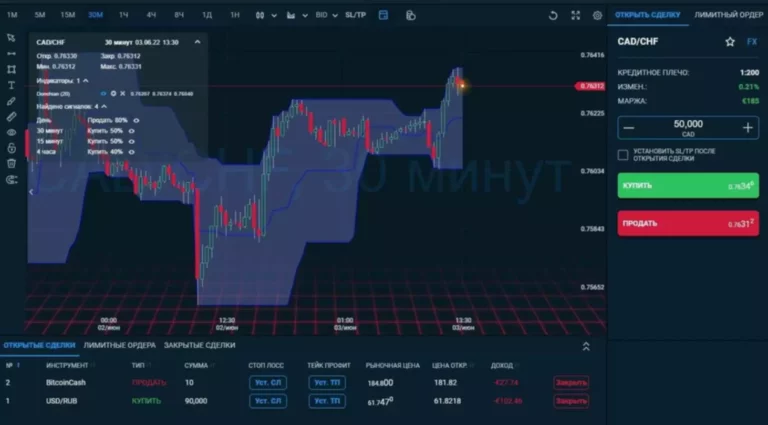Most Tier 1 liquidity providers offer the tightest spreads for the currency pairs they make markets on, and they often trade positions to make money instead of just relying on the bid/offer spread to make their money. This gives the Tier 1 provider a significant opportunity to make profitable trades. A forex liquidity provider is an institution or individual that acts as a market maker in the foreign exchange market.
Only liquidity providers can get LP tokens by contributing to the DEX platform liquidity with their crypto assets. They act as a receipt for the liquidity provider, who will use them to claim their original stake and interest earned. Enhanced liquidity comes with the benefit of lower spreads, the difference between the ask and bid prices of assets in the market. Being able to buy or sell at a more advantageous price and with a lower risk of price slippage effectively means lowering the trading costs for market participants. Core liquidity providers are typically institutions or banks that underwrite or finance equity or debt transactions and then make a market or assist in the trading of the securities.
The most liquid, lowest-cost markets are those where there are no barriers to participation by a wide range of market participants, using a mix of strategies and with a variety of holding periods. The spread usually has much less volatility than individual instruments because the two instruments are influenced by the same market factors. The two instruments usually correlate with each other – their prices move up and down in a similar way. As a result, the margin requirement for the spread is usually much smaller than the combined margin requirements of two separate futures contracts. As you can also see in the below diagram, the impermanent loss increases with the size of the divergence between the initial price and the current price.
- This is very important in times of market news that is likely to cause a high impact.
- Binance recognizes the importance of crypto liquidity providers to users’ trading experience.
- The notably high amount of currency market liquidity typically available allows for competitive dealing spreads and the capability of the market to absorb large orders without affecting the market.
- LP tokens should always be kept safe like any other crypto asset, as losing them means investors will lose their share of the pool.
- As a matter of fact, Bitcoin or BTC is one of the most liquid crypto assets in the market owing to the support for its use on almost all centralized exchanges.
The consensus layer is the backbone of any blockchain network, performing the vital role of facilitating ag… Want to get an in-depth understanding of crypto fundamentals, trading and investing strategies? The main features that every serious liquidity supplier should have are described below. Let’s find out Liquidity Provider meaning, definition in crypto, what is Liquidity Provider, and all other detailed facts.
LP tokens represent the share of a liquidity provider in the liquidity pool, and liquidity providers have complete control over the tokens. For example, if you add $10 to a liquidity pool that has $100 in it, then you could claim around a 10% share in the LP tokens of the concerned liquidity pool. You would receive 10% of LP tokens owing to proof of your ownership of 10% of the liquidity pool. What we left out in the above examples are the trading fees that we have gained during our time as a liquidity provider and potential additional rewards based on a liquidity mining incentive program. If the impermanent loss you suffered is mediocre, there is a high chance that you still outperformed any HODL strategy.
Still, LP tokens can be freely moved around different decentralized applications (DApps), and only withdrawing from the pool means losing the right to the share of the liquidity pool. Once deposited, they can swap between the tokens and charge a small fee for users who swap using their tokens. In decentralized finance (DeFi), most tokens have small market caps and low DeFi liquidity with little availability, and finding a counterpart to match an order may be challenging. They allow the liquidity provider to access crypto loans, transfer ownership of the staked liquidity, and can earn compound interest in yield farming. For example, 10% annual interest on $1,000 is $100, while the compound interest in the second year is calculated at $1,100, so it will be $110.
Liquidity Provider Tokens and Yield Farming
In the forex market, the term “market maker” can refer to both a company that makes markets in currency pairs, as well as to an individual trader working at such a company who performs this function on its behalf. While illiquid market conditions may arise in the forex market, the vast majority of transactions are completed expediently and in a timely manner. The notably high amount of currency market liquidity typically available allows for competitive dealing spreads and the capability of the market to absorb large orders without affecting the market. Just like any other token, holding LP tokens gives liquidity providers complete control over their locked liquidity. Most liquidity pools allow providers to redeem their LP tokens at any time without interference, although many may charge a small penalty if you redeem them too soon.

Low liquidity can lead to large price swings, as even small changes in supply or demand can have a significant impact on prices. By injecting buy and sell orders into the market, LPs help ensure that orders get executed quickly and at predictable prices. It occurs when users transfer their LP assets to an LP staking pool in exchange for rewards of new tokens, https://www.xcritical.com/ just like how the bank pays interest on a savings account. Early stakers in a project can earn a very high annual percentage yield (APY), which decreases as more LP tokens are staked in the pool. Once crypto users decide to invest in LP tokens, they can choose the liquidity pool and start depositing crypto assets to receive LP tokens in return.
USDⓢ-Margined Futures Liquidity Provider Program
I strive to foster understanding, inspire confidence, and catalyze growth in these dynamic sectors, contributing to the forward momentum of our digital financial future. Though we can replicate the traditional model of Order Book Exchange in the DeFi world, it would be quite expensive, slow, and result in a bad user experience. AI coins are designed to streamline AI-related transactions and interactions, all while upholding transpare…

Other liquidity provider token examples are the SushiSwap Liquidity Provider (SLP) tokens on SushiSwap and the Balancer Pool Tokens (BPT) on Balancer. When an investor with a large amount of capital buys and sells extensive quantities of an asset, the impact on prices and other investors could be dramatic. Liquidity providers help the markets maintain equilibrium even in the face of large transactions. With an ECN/STP broker, the trader can be sure that the trade is being executed ultimately by a Tier 1 liquidity provider with the executing forex broker not taking any part or side in the transaction. It is important to note that the assets provided are locked with the platform for the amount of time the user decides to provide liquidity. LP tokens are used to track individual contributions to the overall liquidity pool, as LP tokens held correspond proportionally to the share of liquidity in the overall pool.
What Is a Secondary Market Role in Finance?
DMMs are among the exchange’s core liquidity providers, responsible for the availability and orderly trading of an assigned list of stocks. This means they take the other side of the trade when there is an imbalance of buying and selling in the market. Most online forex brokers and many commercial and investment banks with active foreign exchange divisions are market makers in a variety of currency pairs.

As you can also see, the longer you are in a liquidity pool, the higher your rewards will be, making it a long-term strategy. It’s important to note that specific traders avoid working with market-maker brokers. This is because the market maker takes the opposite side of the customer’s transaction and stands to gain financially if the client loses money. By using an ECN/STP broker, the trader iquidity provider in forex may be sure that a Tier 1 liquidity provider is carrying out the transaction and that the Forex broker is not taking part in any way. Brokers are capable of offering their customers the most acceptable deal this way. Alternatively, they can use the liquidity pools of protocols like Aave or Yearn.finance, which help liquidity providers earn compounded interest more efficiently than humans.
Tier 1 liquidity providers are the most significant investment banks with a wide range of services they provide to their customers. They offer the smallest spreads and numerous trading options compared to other liquidity providers. Individual traders, however, are unable to have direct access to Tier 1 providers. The most common method of entry is through a broker that has connections to one or more Tier 1 liquidity providers that are used to fulfill their orders. That said, Tier 1 providers only collaborate with partners with vast capital to reduce risks.
A core liquidity provider is an intermediary that trades significant quantities of assets to help ensure that market participants can consistently buy and sell assets when they wish. Liquidity providers perform important functions in the market such as encouraging price stability, limiting volatility, reducing spreads, and making trading more cost-effective. Banks, financial institutions, and trading firms are key players in providing liquidity to different parts of the financial markets. Other types of financial institutions play key roles in shoring up the liquidity of various asset classes. For instance, securities firms and other financial companies serve as designated market makers (DMMs) for the New York Stock Exchange.
USDⓢ-Margined Futures Liquidity Provider Program is designed to incentivize participants to provide liquidity for USDⓢ-Margined Futures trading pairs. LPs help to ensure that there are always enough buy and sell orders in the market, even during periods of low demand. When there are few buyers and sellers, it can be difficult to execute transactions, and prices may fluctuate wildly. LP tokens used as collateral are still an emerging trend, and only a few platforms offer the service. Such a financial tool is highly risky, and if a certain collateral ratio is not kept, borrowers may lose their assets by being liquidated. From a technical standpoint, LP tokens are the same as other blockchain-based tokens.
What Are Liquidity Provider (LP) Tokens And How Do They Work?
Without liquidity providers, the liquidity or availability of any given security could not be guaranteed, and the ability of buyers and sellers to buy or sell at any given time would be diminished. As a result of modern technology, many areas of human activity, including trading on the market, have become simpler. The aggregation process is now conducted automatically and rapidly by software, which is responsible for creating liquidity. Essentially, a liquidity aggregator is software that assists brokers in obtaining the best bids from a variety of liquidity providers at the lowest possible prices due to liquidity pools. The most liquid currency pair on the foreign exchange market is without a doubt the Euro quoted against the U.S. Due to the number of participants, the depth of the market and the two currencies’ widespread international usage, bid /offer spreads on the EUR/USD currency pair can range from 0.25 to 1.8 pips.
Leave a Reply